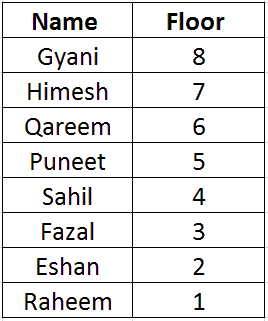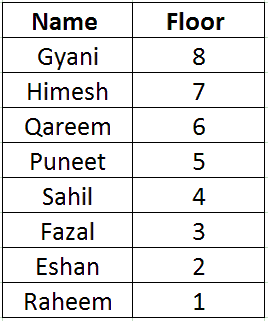IBPS SO Prelims Mock Test - 3 - Banking Exams MCQ
30 Questions MCQ Test - IBPS SO Prelims Mock Test - 3
Statement: Company A has approached the government with a proposal to build road and other infrastructure for providing transport facilities in area X.
Which of the following could possibly lead the government to turn down the proposal forwarded by Company A?
Statement:
M > C < D = R ? E < A ? V > Y
Conclusions:
I. R < A
II. M < E
III. D ? E
Directions: In making decisions about important questions, it is desirable to be able to distinguish between 'strong' arguments and 'weak' arguments. 'Strong' arguments are those which are both, important and directly related to the question. 'Weak' arguments are those which are of minor importance and also may not be directly related to the question or may be related to a trivial aspect of the question.
The question below is followed by three arguments numbered (A), (B) and (C). You have to decide which of the arguments is/are 'strong' argument(s) and which is/are 'weak' argument(s) and then choose your answer accordingly.
Statement: Should there be a cap on drawing ground water for irrigation purposes in India?
Arguments:
(A) No, irrigation is of prime importance for food production in India and it is heavily dependent on groundwater in many parts of the country.
(B) Yes, water tables have gone down to alarmingly low levels in some parts of the country where irrigation is primarily dependent on groundwater, which may lead to serious environmental consequences.
(C) Yes, India just cannot afford to draw groundwater any further as the international agencies have cautioned India against it
Statement:
F > I < E ? L < D = A > R = S
Conclusions:
I. F > S
II. E < A
III. A > S
Directions: In making decisions about important questions, it is desirable to be able to distinguish between 'strong' arguments and 'weak' arguments. 'Strong' arguments are those which are both, important and directly related to the question. 'Weak' arguments are those which are of minor importance and also may not be directly related to the question or may be related to a trivial aspect of the question.
The question below is followed by three arguments numbered (A), (B) and (C). You have to decide which of the arguments is/are 'strong' argument(s) and which is/are 'weak' argument(s) and then choose your answer accordingly.
Statement: Should there be a restriction on the construction of high-rise buildings in big cities in India?
Arguments:
(A) No, big cities in India do not have adequate open land plots to accommodate the growing population.
(B) Yes, only the builders and developers benefits from the construction of high-rise buildings.
(C) Yes, the government should first provide adequate infrastructural facilities to the existing building before allowing the construction of new high-rise buildings.
Direction: The following question consists of three statements numbered I, II and III. Decide if data given in the statements are sufficient to answer the questions below.
Five poles R, A, D, S, and T are placed in a row. What is the position of A with respect to R?
I. D is exactly between R and T.
II. S is at the rightmost end.
III. A is to the immediate right of T.
Directions: Read the following information carefully and answer the question given below.
A, B, C, D, E, F, G and H are sitting around a square table facing the centre in such a way that four of them sit at four corners of the square, while the other four sit in the middle of each of the four sides.
(i) H sits second to right of F. F sits in the middle of one of the sides of the table.
(ii) G, who sits at any of the corners of the table, sits second to the left of E.
(iii) D sits facing H and only two people sit between D and A (taken from one side).
(iv) E is not an immediate neighbour of H and A is not an immediate neighbour of F.
(v) B sits second to the left of D.
Q. Who sits exactly between C and A?
Direction: Study the following information carefully and answer the questions given below.
There are six-persons P, Q, R, S, T, and U with different weights. T is lighter than only one person. U is heavier than S but lighter than Q. R is heavier than Q. Person S is not the lightest one. The person who is the second lightest weighs 58 kgs and the person who is the heaviest weighs 117 kg.
Q. If the summation of weights of T and R is 230 Kgs and summation of weights of S and U is 120, then what is the summation of weights of the T and U?
Directions: Read the following information carefully and answer the question given below.
A, B, C, D, E, F, G and H are sitting around a square table facing the centre in such a way that four of them sit at four corners of the square, while the other four sit in the middle of each of the four sides.
(i) H sits second to right of F. F sits in the middle of one of the sides of the table.
(ii) G, who sits at any of the corners of the table, sits second to the left of E.
(iii) D sits facing H and only two people sit between D and A (taken from one side).
(iv) E is not an immediate neighbour of H and A is not an immediate neighbour of F.
(v) B sits second to the left of D.
Q. What will come in place of the question mark (?) based upon the given sitting arrangement?
AE, CG, BF, ?
Direction: The following question consists of three statements numbered I, II and III. Decide if data given in the statements are sufficient to answer the questions below.
What is A's rank from the top in a class of forty students?
I. A is 3 ranks below B from the top.
II. B's rank from the bottom is 23.
III. A is 3 ranks above B from the bottom.
Directions: Read the following information carefully and answer the question given below.
M, N, O, P, Q, R, S and T go for a party in a restaurant. They sit on a square table and face the centre in such a way that four of them sit in the middle of each of the four sides and rest sit at the corner of the table.
R sits second to the left of M. R sits in the middle of one of the sides of the table.
P sits second to the left of S, who does not sit at any of the corners of the table.
It is also known that only two people sit between P and N.
S is not an immediate neighbour of O.
N sits second to the right of T.
Q is not an immediate neighbour of S and is an immediate neighbour of P.
Q. Who among the following is sitting exactly between R and M, when counted in anticlockwise direction from R?
Seven persons A, B, C, D, E, F, and G are sitting in a row but not necessarily in a same order. Among them, 4 persons are facing north and rest of them are facing south.
E sits fourth to the right of A. There are two persons sitting between B and C. B is not immediate neighbor of E. D sits second to the left of E. A sits at the extreme end of the row. Only one person is sitting at the right of G. F faces north and E sits immediate right of F. The persons sitting on extreme ends, are in opposite direction to each other. There are more than three persons sitting at the right of E.
Q. Which of the following are immediate neighbors of B?
Directions: Read the following information carefully and answer the question given below.
M, N, O, P, Q, R, S and T go for a party in a restaurant. They sit on a square table and face the centre in such a way that four of them sit in the middle of each of the four sides and rest sit at the corner of the table.
R sits second to the left of M. R sits in the middle of one of the sides of the table.
P sits second to the left of S, who does not sit at any of the corners of the table.
It is also known that only two people sit between P and N.
S is not an immediate neighbour of O.
N sits second to the right of T.
Q is not an immediate neighbour of S and is an immediate neighbour of P.
Q. Four of the following five are alike in a certain way and hence, form a group. Find the one that does not belong to the group.
Direction: Study the following information to answer the given questions.
Seven persons A, B, C, D, E, F, and G are sitting in a row but not necessarily in a same order. Among them, 4 persons are facing north and rest of them are facing south.
E sits fourth to the right of A. There are two persons sitting between B and C. B is not immediate neighbor of E. D sits second to the left of E. A sits at the extreme end of the row. Only one person is sitting at the right of G. F faces north and E sits immediate right of F. The persons sitting on extreme ends, are in opposite direction to each other. There are more than three persons sitting at the right of E.
Q. Four of the following are alike in a certain way and hence form a group. Which is the one that does not belong to that group?
Directions: Read the following information carefully and answer the question given below.
M, N, O, P, Q, R, S and T go for a party in a restaurant. They sit on a square table and face the centre in such a way that four of them sit in the middle of each of the four sides and rest sit at the corner of the table.
R sits second to the left of M. R sits in the middle of one of the sides of the table.
P sits second to the left of S, who does not sit at any of the corners of the table.
It is also known that only two people sit between P and N.
S is not an immediate neighbour of O.
N sits second to the right of T.
Q is not an immediate neighbour of S and is an immediate neighbour of P.
Q. Complete the pattern based on the given arrangement.
OR RS SQ _____
Directions: Study the following information carefully and answer the given questions.
Eight friends: L, M, N, O, P, Q, R and S are sitting around a circular table. Each of them likes different novel - Tom Jones, 1984, Hamlet, Macbeth, Dracula, Othello, Night and Holes but not necessarily in the same order. Three of them are facing towards outward and rest are facing towards the center.
P likes 1984 novel and sits third to the right of N who is facing away from the center. N likes reading Dracula. L likes reading Night novel sits third to the left of P. Opposite to L is R who likes reading Othello and is facing away from the center. L is facing towards the center. S is facing away from the center and is to the immediate left of N. S likes reading Macbeth. The one who likes reading Tom Jones and the one who likes Holes sits opposite to each other. The one who likes Tom Jones sits between R and N. M doesn’t like Hamlet and Holes. O likes reading Holes.
Q. How many persons are sitting between S and the person reading Tom Jones, if counted to the right of S?
Directions: Study the following information to answer the given question.
A word and number arrangement machine when given an input line of words and numbers, rearranges them following a particular rule. Given below is an illustration of input and rearrangement.
Input: sum 28 have 19 96 48 luck nice 78 rope
Step I: have sum 28 19 48 luck nice 78 rope 96
Step II: luck have sum 28 19 48 nice rope 96 78
Step III: nice luck have sum 28 19 rope 96 78 48
Step IV: rope nice luck have sum 19 96 78 48 28
Step V: sum rope nice luck have 96 78 48 28 19
Step V is the last step of the rearrangement.
As per the rules followed in the above steps, answer the given question based on the input given below:
Input: 49 last zen 16 82 yet can vast 33 aim 87 54
Q. Which step number would represent the following output?
vast last can aim zen 16 yet 33 87 82 54 49
Directions: Study the following information carefully and answer the given questions.
Eight friends: L, M, N, O, P, Q, R and S are sitting around a circular table. Each of them likes different novel - Tom Jones, 1984, Hamlet, Macbeth, Dracula, Othello, Night and Holes but not necessarily in the same order. Three of them are facing towards outward and rest are facing towards the center.
P likes 1984 novel and sits third to the right of N who is facing away from the center. N likes reading Dracula. L likes reading Night novel sits third to the left of P. Opposite to L is R who likes reading Othello and is facing away from the center. L is facing towards the center. S is facing away from the center and is to the immediate left of N. S likes reading Macbeth. The one who likes reading Tom Jones and the one who likes Holes sits opposite to each other. The one who likes Tom Jones sits between R and N. M doesn’t like Hamlet and Holes. O likes reading Holes.
Q. Who is sitting opposite to the person reading Dracula?
Directions: Study the following information to answer the given question.
A word and number arrangement machine when given an input line of words and numbers, rearranges them following a particular rule. Given below is an illustration of input and rearrangement.
Input: sum 28 have 19 96 48 luck nice 78 rope
Step I: have sum 28 19 48 luck nice 78 rope 96
Step II: luck have sum 28 19 48 nice rope 96 78
Step III: nice luck have sum 28 19 rope 96 78 48
Step IV: rope nice luck have sum 19 96 78 48 28
Step V: sum rope nice luck have 96 78 48 28 19
Step V is the last step of the rearrangement.
As per the rules followed in the above steps, answer the given question based on the input given below:
Q. In Step V, which of the following words/numbers would be at the sixth position from right?
Input: 49 last zen 16 82 yet can vast 33 aim 87 54
Eight friends: L, M, N, O, P, Q, R and S are sitting around a circular table. Each of them likes different novel - Tom Jones, 1984, Hamlet, Macbeth, Dracula, Othello, Night and Holes but not necessarily in the same order. Three of them are facing towards outward and rest are facing towards the center.
P likes 1984 novel and sits third to the right of N who is facing away from the center. N likes reading Dracula. L likes reading Night novel sits third to the left of P. Opposite to L is R who likes reading Othello and is facing away from the center. L is facing towards the center. S is facing away from the center and is to the immediate left of N. S likes reading Macbeth. The one who likes reading Tom Jones and the one who likes Holes sits opposite to each other. The one who likes Tom Jones sits between R and N. M doesn’t like Hamlet and Holes. O likes reading Holes.
Q. Who sits third to the right of M?
Directions: Read the following passage carefully and answer the question given below it.
A group of seven friends A, B, C, D, E, F and G works as Economist, Agriculture Officer, IT Officer, Terminal Operator, Clerk, Forex Officer and Research Analyst for banks L, M, N, P, Q, R and S, but not necessarily in the same order. C works for Bank N and is neither a Research Analyst nor a Clerk. E is an IT Officer and works for Bank R. A works as a Forex Officer and does not work for Bank L or Q. The one who is an Agriculture Officer works for Bank M. The one who works for Bank L works as a Terminal Operator. F works for Bank Q. G works for Bank P as a Research Analyst. D is not an Agriculture Officer.
Q. Who among the following works as an Agriculture Officer?
Directions: Study the following information carefully and answer the questions given below:
Eight people – Raj, Vikram, Suraj, Akash, Anshul, Vishal, Virat and Rohit each belonging to different cities among Kochi, Shimla, Delhi, Surat, Agra, Jaipur, Patna and Bhopal (not necessarily in the same order) visit a state in three different vehicles P, Q, and R. Maximum of three people can visit on a single vehicle. Vikram is from Kochi and does not travel in vehicle Q. Akash travels in vehicle Q and is from Surat. Raj and Vishal also travel in vehicle Q. Only two people travel in vehicle R. Anshul and Virat belong to Agra and Patna respectively. Anshul, Virat and Vikram travel in same vehicle. Suraj neither belongs to Jaipur nor to Delhi. Rohit belongs to Bhopal. Raj is not from Jaipur.
Q. Suraj belongs to which city?
Directions: Read the following passage carefully and answer the question given below it.
A group of seven friends A, B, C, D, E, F and G works as Economist, Agriculture Officer, IT Officer, Terminal Operator, Clerk, Forex Officer and Research Analyst for banks L, M, N, P, Q, R and S, but not necessarily in the same order. C works for Bank N and is neither a Research Analyst nor a Clerk. E is an IT Officer and works for Bank R. A works as a Forex Officer and does not work for Bank L or Q. The one who is an Agriculture Officer works for Bank M. The one who works for Bank L works as a Terminal Operator. F works for Bank Q. G works for Bank P as a Research Analyst. D is not an Agriculture Officer.
Q. What is the profession of C?
Directions: Study the following information carefully and answer the questions given below:
Eight people – Raj, Vikram, Suraj, Akash, Anshul, Vishal, Virat and Rohit each belonging to different cities among Kochi, Shimla, Delhi, Surat, Agra, Jaipur, Patna and Bhopal (not necessarily in the same order) visit a state in three different vehicles P, Q, and R. Maximum of three people can visit on a single vehicle. Vikram is from Kochi and does not travel in vehicle Q. Akash travels in vehicle Q and is from Surat. Raj and Vishal also travel in vehicle Q. Only two people travel in vehicle R. Anshul and Virat belong to Agra and Patna respectively. Anshul, Virat and Vikram travel in same vehicle. Suraj neither belongs to Jaipur nor to Delhi. Rohit belongs to Bhopal. Raj is not from Jaipur.
Q. Which of the following is the correct pair?
Directions: Read the following passage carefully and answer the question given below it.
A group of seven friends A, B, C, D, E, F and G works as Economist, Agriculture Officer, IT Officer, Terminal Operator, Clerk, Forex Officer and Research Analyst for banks L, M, N, P, Q, R and S, but not necessarily in the same order. C works for Bank N and is neither a Research Analyst nor a Clerk. E is an IT Officer and works for Bank R. A works as a Forex Officer and does not work for Bank L or Q. The one who is an Agriculture Officer works for Bank M. The one who works for Bank L works as a Terminal Operator. F works for Bank Q. G works for Bank P as a Research Analyst. D is not an Agriculture Officer.
Q. Which of the following combinations of 'person – profession – bank' is correct?
Direction: The following questions are based on the five three-digit numbers given below.
420 885 290 569 182
Q. If in the above set of numbers 1 is added to the first digit and 2 is subtracted from the second digit, then how many numbers will be greater than 500?
Directions: Read the following information and answer the question given below it.
Eight students, namely Puneet, Qareem, Raheem, Sahil, Eshan, Fazal, Gyani and Himesh, lives in a hostel which is an 8-storeyed building. Each floor is numbered from 1 to 8. The ground floor is floor number 1 and the topmost floor is floor number 8.
Sahil does not live on the topmost floor.
Eshan lives on the floor number which is exactly divisible by 2 and immediately below the floor where Fazal lives.
Raheem lives on the lowermost floor. Puneet lives immediately below the floor where Qareem lives.
Only one person lives between the floors of Himesh and Puneet.
Puneet lives below the floor where Himesh lives. Qareem lives on floor number 6.
Q. Who lives on the floor which is just above the floor where Himesh lives?
Direction: The following questions are based on the five three-digit numbers given below.
420 885 290 569 182
Q. If the digits in all the numbers are arranged in descending order, what will be the sum of the second highest and second lowest number?
Directions: Read the following information and answer the question given below it.
Eight students, namely Puneet, Qareem, Raheem, Sahil, Eshan, Fazal, Gyani and Himesh, lives in a hostel which is an 8-storeyed building. Each floor is numbered from 1 to 8. The ground floor is floor number 1 and the topmost floor is floor number 8.
Sahil does not live on the topmost floor.
Eshan lives on the floor number which is exactly divisible by 2 and immediately below the floor where Fazal lives.
Raheem lives on the lowermost floor. Puneet lives immediately below the floor where Qareem lives.
Only one person lives between the floors of Himesh and Puneet.
Puneet lives below the floor where Himesh lives. Qareem lives on floor number 6.
Q. Who lives on the floor immediately below the floor where Himesh lives?
Direction: The following questions are based on the five three-digit numbers given below.
420 885 290 569 182
Q. If the difference between first and third digit of each number is added to the second digit of the same number, then result of which of the following numbers will be lowest?





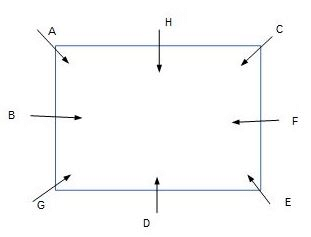
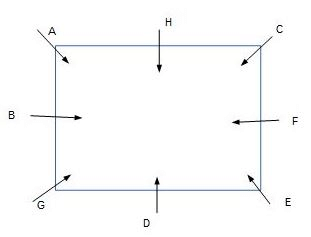
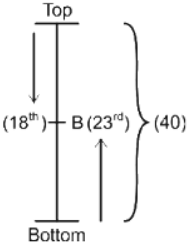



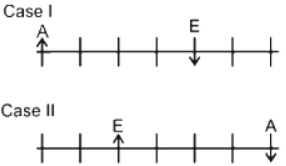
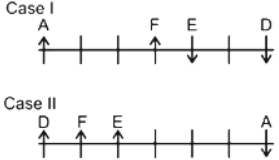

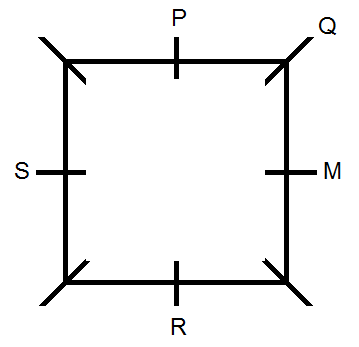
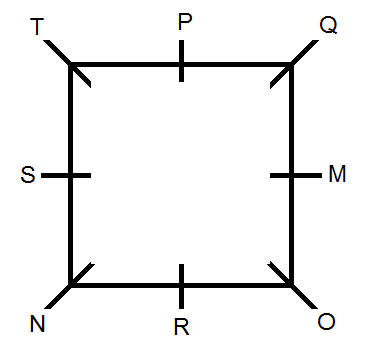

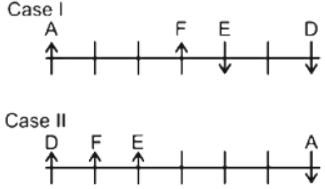

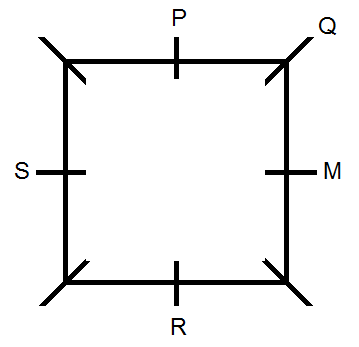
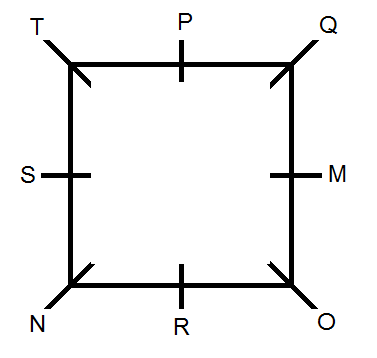
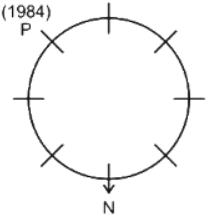
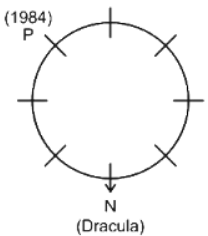
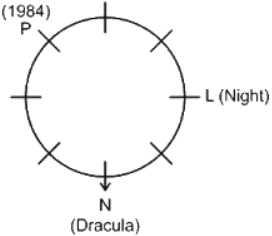
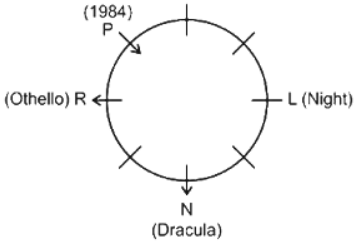
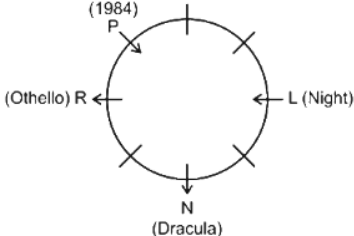
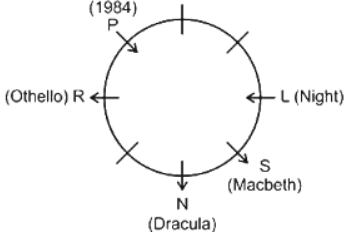


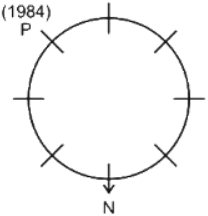
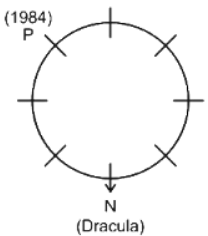

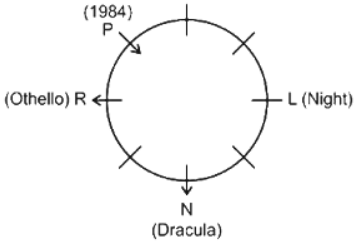
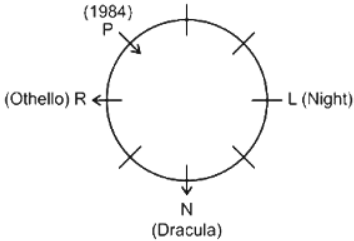
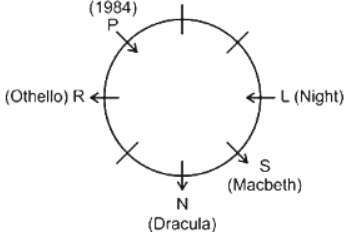
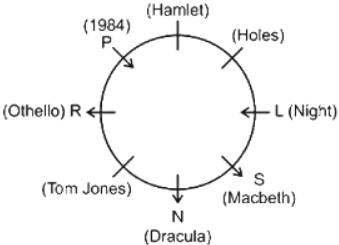
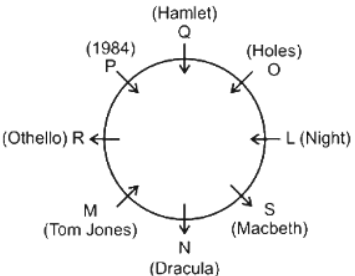


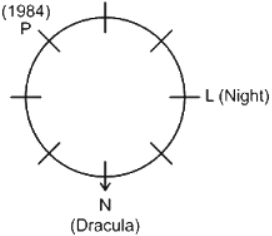
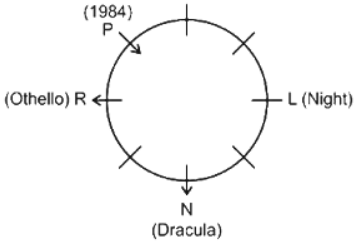
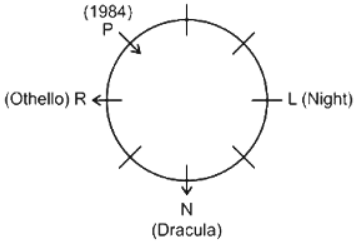
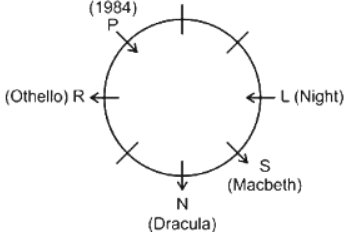
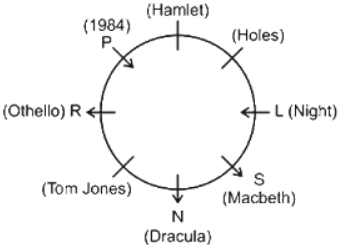
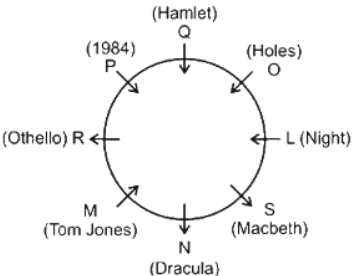
 (2) Moving further, from 'A works as a Forex Officer and does not work for Bank L or Q. The one who is an Agriculture Officer works for Bank M. D is not an Agriculture Office', we get:
(2) Moving further, from 'A works as a Forex Officer and does not work for Bank L or Q. The one who is an Agriculture Officer works for Bank M. D is not an Agriculture Office', we get:




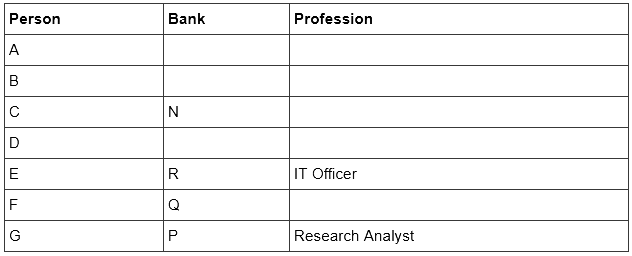 (2) Moving further, from 'A works as a Forex Officer and does not work for Bank L or Q. The one who is an Agriculture Officer works for Bank M. D is not an Agriculture Office', we get:
(2) Moving further, from 'A works as a Forex Officer and does not work for Bank L or Q. The one who is an Agriculture Officer works for Bank M. D is not an Agriculture Office', we get:

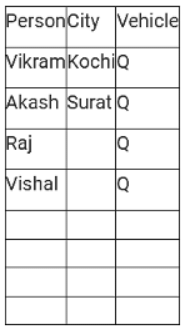
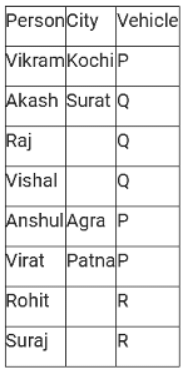
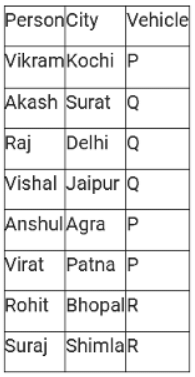
 (2) Moving further, from 'A works as a Forex Officer and does not work for Bank L or Q. The one who is an Agriculture Officer works for Bank M. D is not an Agriculture Office', we get:
(2) Moving further, from 'A works as a Forex Officer and does not work for Bank L or Q. The one who is an Agriculture Officer works for Bank M. D is not an Agriculture Office', we get:

